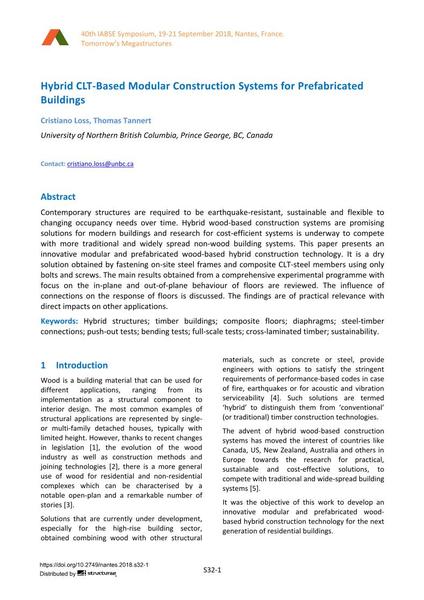Hybrid CLT-Based Modular Construction Systems for Prefabricated Buildings

|
|
|||||||||||
Détails bibliographiques
| Auteur(s): |
Cristiano Loss
(University of Northern British Columbia, Prince George, BC, Canada)
Thomas Tannert |
||||
|---|---|---|---|---|---|
| Médium: | papier de conférence | ||||
| Langue(s): | anglais | ||||
| Conférence: | IABSE Symposium: Tomorrow’s Megastructures, Nantes, France, 19-21 September 2018 | ||||
| Publié dans: | IABSE Symposium Nantes 2018 | ||||
|
|||||
| Page(s): | S32-1 | ||||
| Nombre total de pages (du PDF): | 8 | ||||
| DOI: | 10.2749/nantes.2018.s32-1 | ||||
| Abstrait: |
Contemporary structures are required to be earthquake-resistant, sustainable and flexible to changing occupancy needs over time. Hybrid wood-based construction systems are promising solutions for modern buildings and research for cost-efficient systems is underway to compete with more traditional and widely spread non-wood building systems. This paper presents an innovative modular and prefabricated wood-based hybrid construction technology. It is a dry solution obtained by fastening on-site steel frames and composite CLT-steel members using only bolts and screws. The main results obtained from a comprehensive experimental programme with focus on the in-plane and out-of-plane behaviour of floors are reviewed. The influence of connections on the response of floors is discussed. The findings are of practical relevance with direct impacts on other applications. |
||||
| Mots-clé: |
durabilité
|
||||
